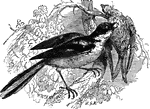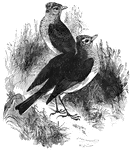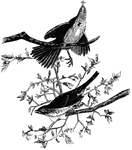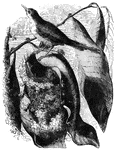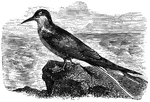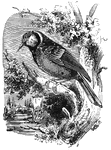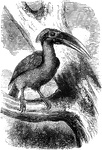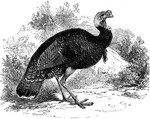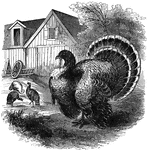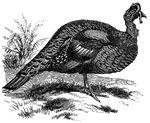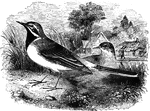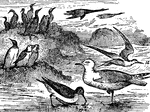
Types of Seashore Life
9. Cormorant, 10. Guillemot, 11. Puffin, 12. Sanderling, 13. Herring Gull, 14. Tern.
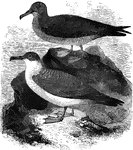
Greater Shearwater
Averaging about eighteen inches in length, the greater shearwater is uncommon in Europe; it breeds on…
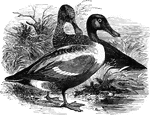
Shoveler
Also called the broad-bill and spoon-bill, the shoveler is commonly found on lakes and rivers, where…

Magpie Shrike
Found in Guiana and Brazil, this shrike draws its name from its resemblence to the magpie.
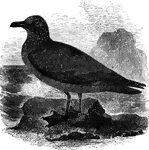
Common Scua
Found throughout Northern Europe, the common skua has been known to attack other birds in order to steal…
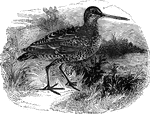
Double Snipe
The double snipe, also known as the solitary snipe and the great snipe, is found sparingly throughout…
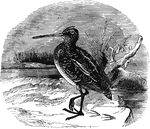
European Snipe
Ranging as far north as Scandanavia, Iceland, and Greenland in the summer, the European snipe migrates…
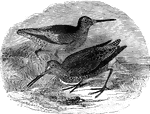
Gray Snipe
The gray snipe is a migratory bird, found in the United States. It is also known as the brown snipe,…
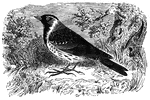
Common Snowbird
Found as far north as Greenland, the common-snow bird migrates as far south as Virginia in the winter.

Common Sparrow of Europe
Often found among human settlement, the common sparrow of Europe's diet consists of seeds, insects,…
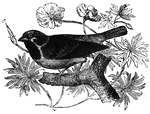
Wood Sparrow
Somewhat aloof from human habitiation, the wood-sparrow can often be seen mingline with other sparrow…
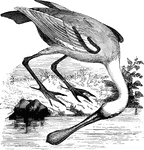
Roseate Spoonbill
Drawing its name from the widing of its bill towards the tip, the spoonbill frequents coastal and marshy…
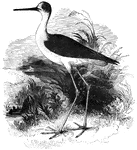
Black-Winged Stilt
Also known as the European stilt, the black-winged stilt inhabits coastal areas where it forages for…

Marabout Stork
Found in the tropical regions of Africa, the marabout stork can be found amongst vultures, picking through…
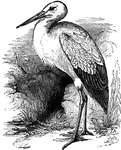
White Stork
Measuring about three feet in length, the white stork migrates to Europe during the summer, and back…

Bank Swallow
The bank swallow (also known as the sand martin) lives in large communities, often of several hundred…

Common European Swallow
The common European swallow, which averages approximately six inches in length. This migratory bird…
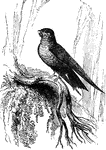
Esculent Swallow
The esculent swallow's nest is prized among the Chinese as a delicacy. It is native to many parts of…

Mute Swan
Measuring up to five feet in length, the mute swan is found throughout Europe, and has long been domesticated…
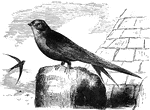
Common European Swift
This swift prefers to build its nest under the eaves of houses, in holes around steeples, in old towers,…
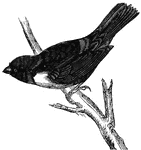
Scarlet Tanager
The scarlet tanager (also known as the black-winged summer redbird, or fire bird) feeds on insects,…

English Teal
Common throughout Europe, the English teal is accidental to the East coast of the United States.
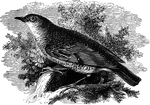
Golden Thrush
Also known as White's thrush, the golden thrush is native to Japan and Savabut migrates to Southern…

Red-Wing Thrush
The red-wing thrush migrates from the north to the south of Europe in the winter, feeding on worms and…
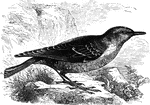
Rock Thrush
Inhabiting the higher reaches of Southern Europe, the rock thrush descends to lower altitudes during…

Black-Lored Tit
Native to the Himalaya Mountains, P. xanthogenys is somewhat smaller than the great tit.

Blue Tit
Commonly found throughout Europe, the blue titmouse is known for destroying the buds of flowers, and…
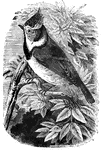
Crested Tit
The crested tit prefers the colder climes of Northern Europe, being common in Denmark, Sweden, Russia,…
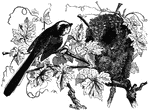
Long-Tailed Titmouse
The most noted of the titmice, the long-tailed titmouse is about five and a half inches in length, half…
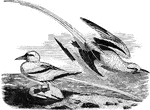
Tropicbird
Notable for its lengthy tail-feathers, the tropic bird inhabits the tropical regions of the Atlantic…

Turnstone
The turnstone is found along coasts. It gets its name from its habit of flipping over small stones,…
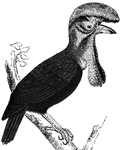
Umbrellabird
Feeding primarily on fruits, the umbrella-bird has two dstinctive crests of feathers, one rising from…
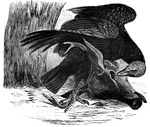
Black Vulture
Genus Coragyps, about the size of a small turkey. This one is feeding on a cow's head.
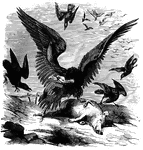
Black Vulture
Black vulture (or carrion crow), genus Coragyps, about the size of a small turkey. This group…
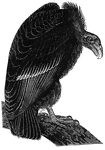
California Vulture
C. Californianus, a large species of vulture, found only on the western side of the Rocky Mountains,…
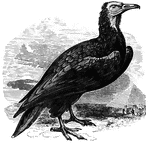
Egyptian Vulture
N. percnopterus, common to Africa, sometimes found in Southern Europe and in Asia. Males and…
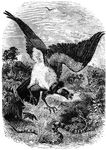
King Vulture
Genus sarcoramphus, a large vulture found in the tropical regions of the Americas, sometimes…
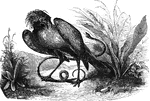
Secretary Vulture
G. serpentarius, known as the serpent vulture because it feeds on snakes. It has a distinctive…

Vultures
Genus Vulture, posess keen eyesight and a sense of smell for locating carcasses. Vultures feed…
